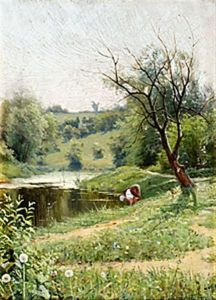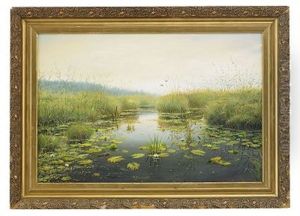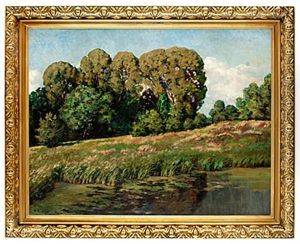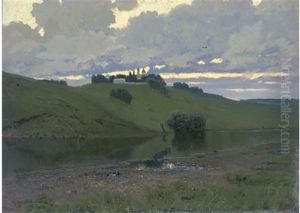Mikhail Ivanovich Kholodovsky Paintings
Mikhail Ivanovich Kholodovsky was a Russian-Soviet artist known for his contributions to painting and graphic arts. Born on August 1, 1887, in the Russian Empire, Kholodovsky's artistic journey began in the early 20th century, a period marked by significant upheavals and transformations in the art world. His works are characterized by their exploration of various artistic movements, including realism, impressionism, and elements of early modernist tendencies. Despite the paucity of detailed records about his early life, it's known that he navigated through the tumultuous era of the Russian Revolution and the subsequent establishment of the Soviet Union, which significantly influenced his artistic direction and opportunities.
During the early stages of his career, Kholodovsky engaged deeply with the themes of rural life, landscape, and the working class, reflecting the socio-political context of Russia and the Soviet Union. His dedication to portraying the essence of the Russian spirit and the Soviet ethos through his art made him a notable figure within the Soviet art community. Throughout the 1920s and 1930s, he participated in several exhibitions, showcasing his versatility across different mediums, including oil painting and graphic works. His ability to capture the nuances of light, shadow, and color, combined with a profound sense of empathy towards his subjects, distinguished his work from his contemporaries.
Despite the challenges posed by the Stalinist regime, including the strictures of Socialist Realism, Kholodovsky continued to evolve his artistic style while adhering to the ideological demands of the period. His later works, particularly those from the 1940s and 1950s, reflect a deeper exploration of Soviet identity, industrialization, and the rebuilding of the Soviet Union post-World War II. Mikhail Ivanovich Kholodovsky remained active in the Soviet art scene until his later years, contributing to the cultural and artistic legacy of the Soviet era.
Kholodovsky passed away on January 14, 1974, in the Soviet Union. His legacy is preserved through his contributions to Soviet art, particularly in the realms of painting and graphic arts. Though not as widely recognized internationally as some of his contemporaries, Kholodovsky's work remains a testament to the rich tapestry of Soviet art, offering insights into the complexities and nuances of Russian and Soviet life through the turbulent 20th century.






